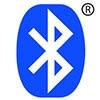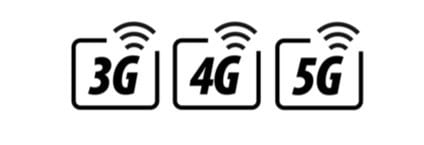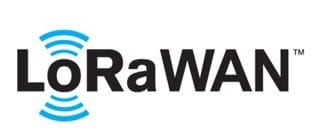Communication protocols for IoT
Follow articleHow do you feel about this article? Help us to provide better content for you.
Thank you! Your feedback has been received.
There was a problem submitting your feedback, please try again later.
What do you think of this article?
Electronics engineers and application developers need to weigh up the pros and cons of an ever-expanding range of connectivity options when working on products and systems for the Industrial Internet of Things (IIoT).
Smart factories are nothing new. Ever since PLCs replaced banks of hardwired relays, engineers have been overseeing the intelligent automation of industrial processes. Over time, a host of wired networking protocols such as Modbus, Profibus, EtherNET/IP, Interbus, ControlNet, and many more, have been employed in manufacturing environments as a means of performing standard industrial communication, primarily for machine and process control.
Now, though, the emergence of the Industrial Internet of Things (IIoT) has opened up endless new possibilities for the smart factory, with the collection and transfer of data growing exponentially. To speed the deployment process and to save considerable installation costs, many applications are now using wireless networking methods instead of extending the reach of the wired network. From plant and equipment via the edge or the cloud to the enterprise level, managing data flow requires a whole new level of understanding of wireless communication, juggling a wide range of application-based trade-offs that need to be considered. These include range, power, data rate, latency, resilience and operating conditions, to name but a few. Here we provide a breakdown of the most important IIoT communication protocols, which could help you deliver the full benefit of Industry 4.0.
Bluetooth Mesh
Bluetooth is perhaps the best-known short-range communications technology, which has become extremely popular for consumer IoT-based applications such as device-to-device file transfer and wireless speakers and headsets. However, Bluetooth, an IEEE 802.15 standard, has also become a significant player in smart industrial environments, with the pace of adoption increasing rapidly since 2017 following the launch of Bluetooth Mesh – a network topology available on Bluetooth LE that enables the creation of large-scale many-to-many device communications. One of the significant positives of mesh networking is that all devices in a network can communicate with each other, rather than through the restriction of a central hub, making it particularly suitable for control, monitoring and automation of systems in industrial environments where potentially thousands of devices need to communicate with each other securely.
Pros: Bluetooth Mesh topology means the size and area of the network is virtually unlimited, making it ideally suited for the connection of extensive sensor networks. Launched through Bluetooth SIG, interoperability is also a strong point, with backwards compatibility with a wide range of existing Bluetooth devices.
Cons: The relatively short range and low data transfer rates are a hindrance in some applications. Bluetooth Mesh is more suited to close proximity local networks.
Cellular
Any IIoT application that requires operation over longer distances can take advantage of GSM/3G/4G cellular communication capabilities – a proven means of sending relatively high quantities of data. It can also be ideal for sensor-based low-bandwidth data projects that will send very low amounts of data over the Internet. Narrowband IoT (NBIoT), based on the cellular infrastructure, is also an alternative cellular protocol for low data rates. While much of the attention of the latest fifth-generation mobile technology (5G) has been focused on improving mobile services, IIoT use-cases are also coming to the fore. With ultra-high-speed, low latency and large volume data transfer capabilities, 5G could significantly enhance industrial environments, driving advancements in critical areas such as process optimisation and supporting increased levels of automation. The protocol is particularly suited for any IIoT application that requires the ultra-reliable, low-latency communications, with theoretical peak speeds of 20 Gbps supporting mission-critical applications such as industrial robotics, image processing or precise indoor positioning. Other use cases are the deployment of so-called massive internet of Things (mIoT), where 5G could be deployed to service networks comprising billions of low-cost, long-range, ultra-energy-efficient connected devices across even the most remote locations, with a requirement for infrequent communications.
Pros: Ultra-high-speed, low-latency and high-volume data capabilities capable of supporting all mission-critical IIoT communication needs.
Cons: Expense and power consumption can be too high for many applications. Establishing ROI on 5G-enabled smart factories will take time.
Constrained Application Protocol (COAP)
The Constrained Application Protocol (CoAP) is a specialised web transfer protocol specifically developed for use with constrained nodes and constrained networks in machine-to-machine applications. Its primary strength is as a means of enabling simple devices to join the internet, even when low bandwidth and low availability are restrictive factors. Developed by the Internet Engineering Task Force, CoAP RFC-7252, has been designed to support a relatively high number of inexpensive nodes, having been designed to work on microcontrollers with as low as 10 KiB of RAM and 100 KiB of code space. Fundamentally, CoAP’s architecture is designed to reduce overloading of network bandwidth, save battery power and storage space, and lower the amount of data that the CPU operates.
Pros: A simple protocol, similar to HTTP, which has low overheads and low bandwidth requirements in constrained environments
Cons: Launched in 2014, it is still an emerging standard. Message unreliability and security have been cited as disadvantages.
LoRaWAN
LoRaWAN is a low-power wide-area network protocol that supports low-cost mobile secure bi-directional communication in IIoT networks. Operating in the unlicensed industrial, scientific and medical (ISM) wireless spectrum of 850 - 950 MHz, its network architecture is typically deployed in a star-of-stars topology, with gateways sending messages between end-devices and a central network server. The gateways are linked to the network server through standard IP connections, acting as a bridge and converting RF packets to IP packets and vice versa. Optimised for reliable long-range operation, wireless communication allows a single-hop link between the end-device and one or many gateways, with all modes capable of bi-directional communication. LoRaWAN can support large networks of potentially millions of devices, with data rates ranging from 0.3 kbps to 50 kbps. Its extended range means LoRaWAN has found increasing application in harsh industrial environments, where noise can have an adverse impact on communication. LoRaWAN’s low-power characteristics mean it has proved to be a popular networking solution for battery-powered IIoT devices, as it is capable of supporting battery life for periods of up to ten years.
Pros: Scalable solution that provides low-power wide coverage range, with easy to deploy architecture.
Cons: Only for applications with low data rates. Unsuited to real-time applications that have low latency requirements.
OpenThread
Google-backed OpenThread is an open-source implementation of Thread, an IPv6-based networking protocol which has been specifically designed for low-power devices in a wireless personal area mesh network. It is sometimes referred to as Google’s version of the Zigbee, as they are both based on the IEEE 802.15.4-2006 standard. The launch of OpenThread makes the networking technology used in Google Nest products available to a broader range of developers, primarily as a means of expanding and diversifying the types of products for the connected home and commercial buildings. However, the protocol could also find application in industrial settings, particularly as a means of linking resource-constrained nodes such as embedded sensors and actuators over multiple wireless connections.
Pros: Simple and secure installation, while self-healing mesh networking means no single point of failure. Highly efficient, with low-power devices capable of sleeping and operating on battery power for extended periods.
Cons: Relatively new networking protocol more associated with home automation environment, so more limited application in industrial environments.
Sigfox
Sigfox uses ISM bands to transmit data over a very narrow spectrum to and from connected objects, supporting machine to machine applications that run on a small battery and only require low levels of data transfer. The protocol uses a technology called Ultra Narrow Band, which has been specifically designed to handle low data-transfer speeds. It consumes only 50 microwatts compared to 5000 microwatts for cellular communication or can deliver a typical standby time 20 years with a 2.5Ah battery while it is only 0.2 years for cellular. The robust, power-efficient and scalable nature of Sigfox networks have made it suitable for various applications running battery-powered devices over wide areas. Although it doesn’t target any specific industries, Sigfox networks can virtually be used in any context where there is a need for a low throughput connectivity solution. The definition of low throughput is characterised as up to 140 messages per object per day, with a payload size for each message of 12 bytes and wireless throughput up to 100 bits per second. Typical IIoT applications include cloud-based asset tracking within manufacturing and resource management within the utilities sector.
Pros: Low-cost connectivity, with low energy consumption. Easy to integrate and deploy, without the need for complex infrastructure.
Cons: Not suitable for high data rate communications.
Zigbee
Zigbee is a local area network protocol, based on the IEEE 802.15.4 standard, which underpins a large installed base of operation in industrial settings. Operating at 2.4GHz, it is a protocol most suited to applications that require relatively infrequent data exchanges at low data-rates over a restricted area and within a 100m range. Based on a mesh topology, Zigbee can support thousands of nodes in a network, encouraging efficient data transfer between sensors and devices which can all communicate together. The scalable nature of Zigbee makes it highly optimised for IIoT applications inside factory environments.
Pros: Offers some significant advantages in complex industrial systems offering low-power operation, high security, robustness and high scalability with high node counts.
Cons: Minimal range and low data rates restrict Zigbee to local networks. Maximum data rate of 250 kbps, making it perform less favourably than other protocols such as WiFi.
Conclusion – choosing the right protocol
It is clear, then, that design engineers and applications developers have a multitude of options when it comes to selecting communications protocols for IIoT. And there are many other options available such as Z-Wave, 6LoWPAN, WiFi and Neul, to name but a few. In each case, factors such as range, power budget and required data rate, together with link latency and robustness, will be key determining factors in the selection process. Also, it is worth remembering that protocols are often used for different purposes – engineers might want to use a Bluetooth Mesh to link hundreds of sensors back to a data aggregator/gateway, which then uses WiFi to communicate to a site-access point and onward to the cloud. It is about making the most of the broad range of technologies available, often in seamless combination, to achieve the best results for the task at hand.










Comments